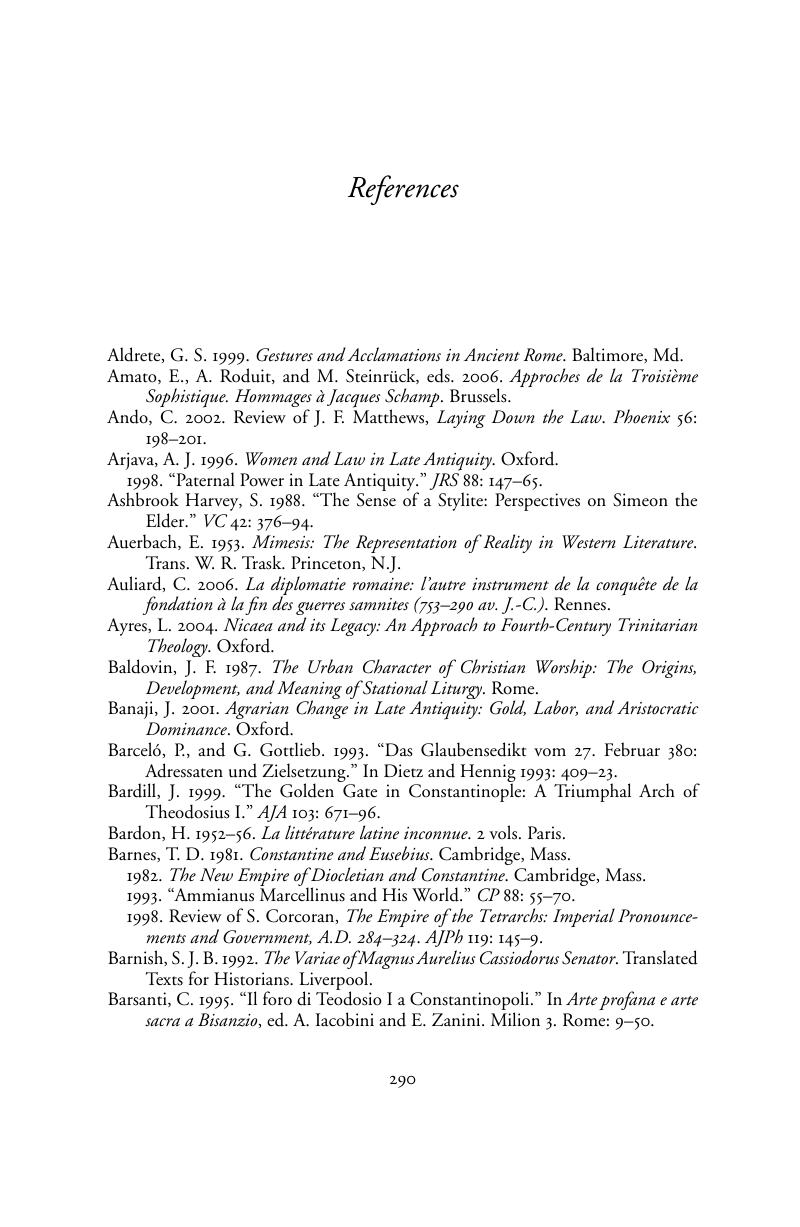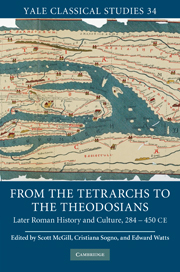References
Published online by Cambridge University Press: 04 August 2010
Summary

- Type
- Chapter
- Information
- From the Tetrarchs to the TheodosiansLater Roman History and Culture, 284–450 CE, pp. 290 - 312Publisher: Cambridge University PressPrint publication year: 2010



